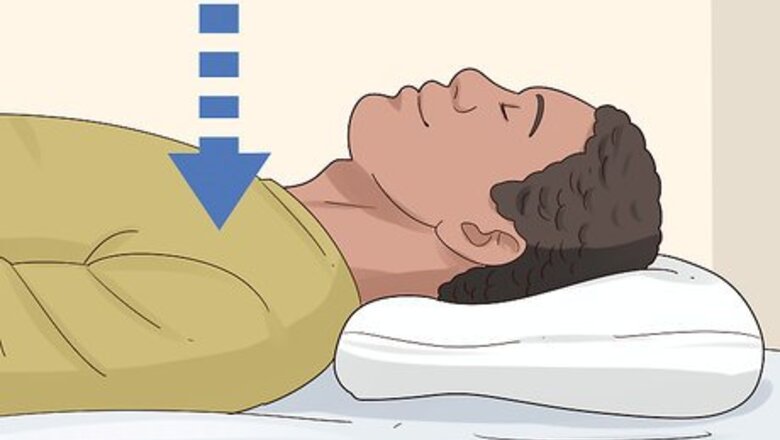
views
Selecting a Sleep Position
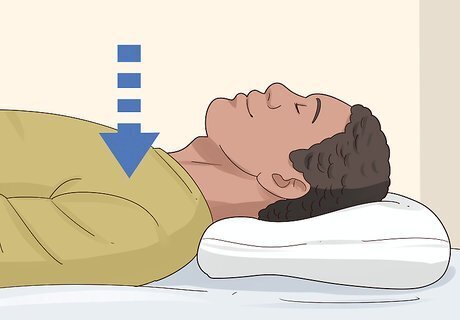
Sleep on your back for more support. Sleeping on your back will help to keep your neck aligned with your spine and give your entire body more support. It will also ensure your neck does not twist or lean to 1 side during the night. If you snore, sleeping on your back can make your snoring worse. You may try sleeping on your side instead.
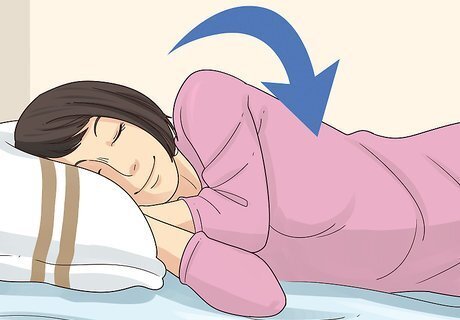
Position yourself on your side for comfort. Sleeping on 1 side is also a good option, especially if you find it more comfortable than sleeping on your back. A side sleeping position can also help your neck feel more supported, resting on 1 side on a pillow. If your neck pain makes it difficult for you to turn your head to one side, sleep on the side of your body where your neck can turn or twist without pain. If you tend to also have lower back pain, sleeping on your side may be a good option as your spine can curve naturally while you sleep.

Avoid sleeping on your stomach, as this can strain your neck. Sleeping on your stomach can be very hard on your neck, back, and spine. If you tend to sleep on your stomach, try sleeping on your back or side instead. You may need to place pillows on either side of your body to ensure you do not roll over onto your stomach. Avoid placing tennis balls in your clothing to keep your from turning onto your stomach or to stop snoring, as this can actually create more back pain.
Using Sleep Supports

Use a cervical contour pillow for good neck support. These types of pillows have a depression in the center where you can rest your head and support your neck by elevating it slightly. These pillows are usually made of foam so they have enough support and padding. Look for natural latex pillows if you do not like how warm memory foam can get during the night. If you are allergic to latex, use a pillow made of memory foam instead. Avoid pillows stuffed with feathers or buckwheat, as they are often too soft to give your neck the support it needs while you sleep.
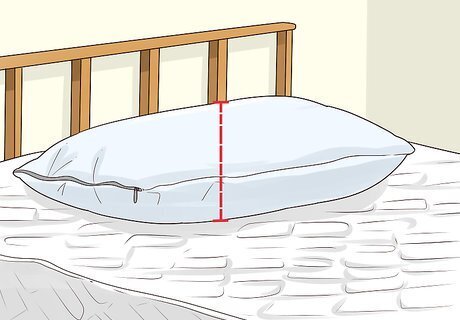
Pick a thick pillow if your mattress is firm. Use a thicker pillow so the pillow can fill in the gap between your head and your mattress. Your pillow should allow your shoulders to sink into the bed so your neck and head are aligned and well supported. You can also try stacking pillows on top of each other so your neck feels comfortable and supported. You may adjust the pillows based on whether you sleep on your side or your back, as you may need more than one pillow to get comfortable.
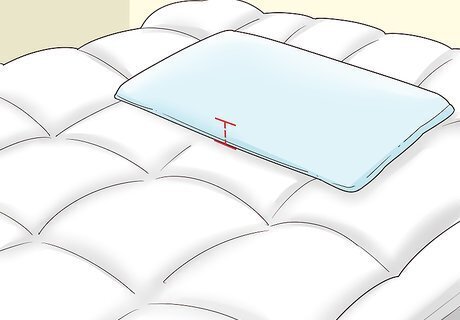
Go for a thin pillow if your mattress is soft. If you have a mattress that has a memory foam or pillow top, use a thinner pillow to fill in the smaller gap between your head and your mattress.
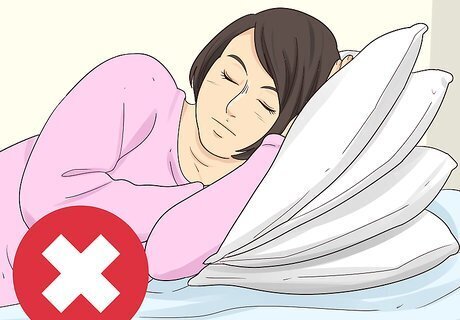
Avoid stacking pillows too high, as this can agitate your neck. You usually need 1-2 pillows maximum to support your neck and head properly. Avoid sleeping on too many pillows or pillows that are stacked very high, causing your head to dip into your chest or your neck to sit too far forward. Your neck should follow the natural curve of your spine when you lay down on your pillow, or pillows.
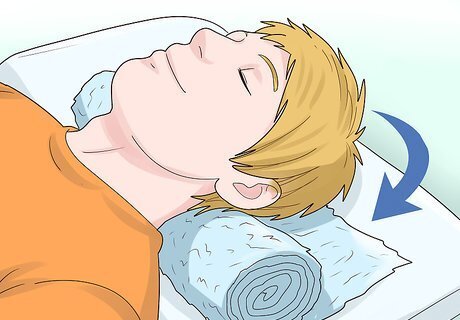
Put a towel or a small pillow under your neck for extra cushioning. Roll up the towel and slide it under your neck to support it better when you sleep. You can also use a small, roll-shaped pillow. If you are worried about the towel or pillow shifting in the night, slide it in your pillowcase so it stays in place.
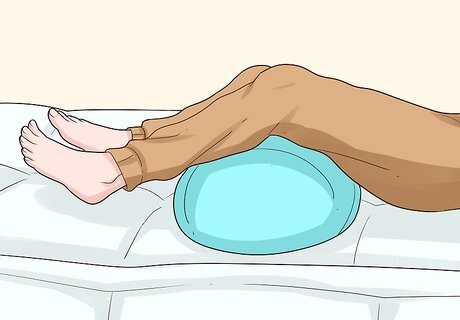
Slide a pillow under your knees if you sleep on your back. If you tend to sleep on your back, put a pillow or a bolster under your knees to make the position more comfortable. The pillow will help to keep your spine straight and your neck aligned while you sleep.
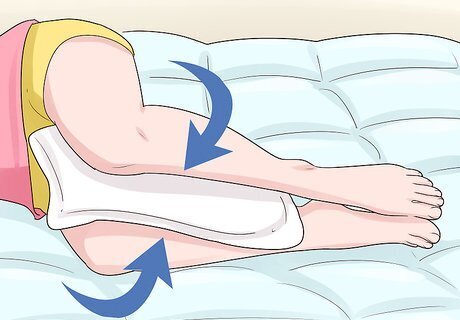
Place a pillow between your legs if you tend to sleep on your side. Side sleepers often find it more comfortable to sleep with a regular pillow or a body pillow sandwiched between their legs. Hug the pillows to your chest and between your legs so you can keep your legs bent and your spine aligned.
Getting a Good Night’s Sleep
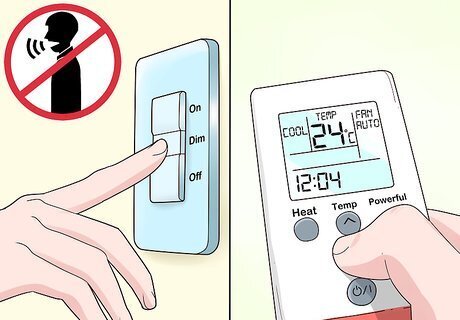
Make your bedroom cool, quiet, and dark. Set up an ideal sleeping environment so you can relax and fall asleep more easily. Dim the lights in your bedroom and make sure it is quiet. The temperature of your bedroom should be on the cooler side, as it is often easier to fall asleep in cooler temperatures. Draw the drapes or curtains in your bedroom to block out any natural light so your body knows it is time to go to sleep.
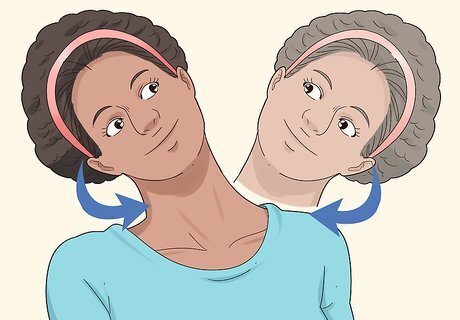
Stretch your neck before bed. Do neck rolls from one side to the other so stretch out your neck so it does not feel as tense or strained. Try stretching your arms above your head and leaning from 1 side to the other to release tension in your shoulders and neck. You can also do a forward bend, letting your neck hang towards your toes, to stretch this area. Get in the habit of doing at least 1-2 neck stretches a night before bed to help your neck relax and reduce your neck pain.
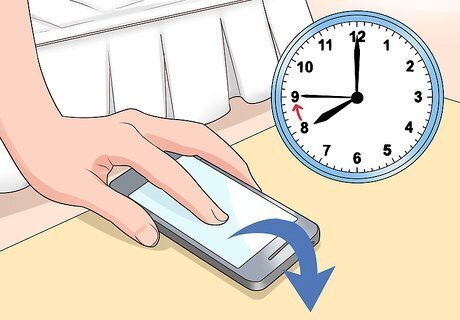
Put your phone down an hour before bed. Scrolling through social media or the news on your phone can strain your neck muscles when you tilt or shift your head to gaze at the screen. The blue light on your phone can also block your body’s release of melatonin, a natural chemical that can help you sleep. Opt for reading a book instead, propped up on a pillow in bed so your neck is well supported. You can also listen to calming music as you lay down in bed to help you follow asleep, listening to music does not require you to strain your neck muscles. You may also want meditation nightly as part of your pre-bed routine.
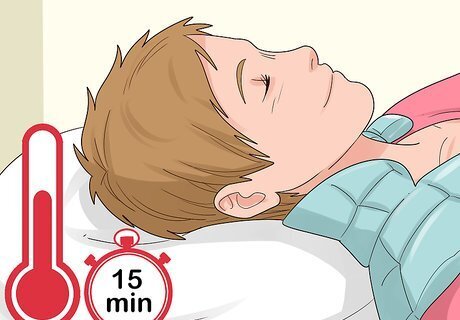
Use a warm heating pad or compress on your neck before bed. To help relax both your mind and your muscles, you can apply a warm heating pad or compress to the troubled area. Leave it on for 15 minutes, then remove it. Don’t allow the heating pad to get so hot that it burns your skin! Place a towel between your skin and the pad, if necessary.
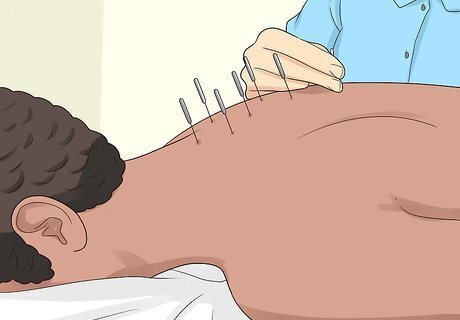
Take pain medication before you go to sleep if your neck pain is bothering you. If your neck pain is very uncomfortable, take over-the-counter pain medication before you go to bed. Make sure you follow the manufacturer's instructions on dosage and never take more than the recommended amount. If your neck pain is severe and does not get better after a few nights of sleep, even with sleep modifications and pain medication, go see your doctor for treatment. They may suggest stretches, physical therapy, or alternative treatments like acupuncture or massage, to address your neck pain. Pain medication can really help alleviate your symptoms, but it's not going to do anything to treat the underlying cause of your pain, so it's not a good long-term strategy.


















Comments
0 comment